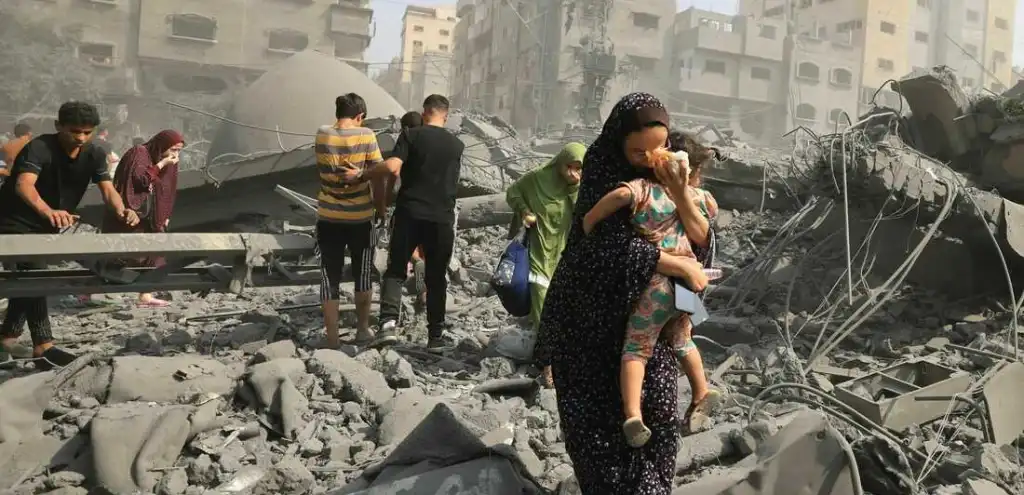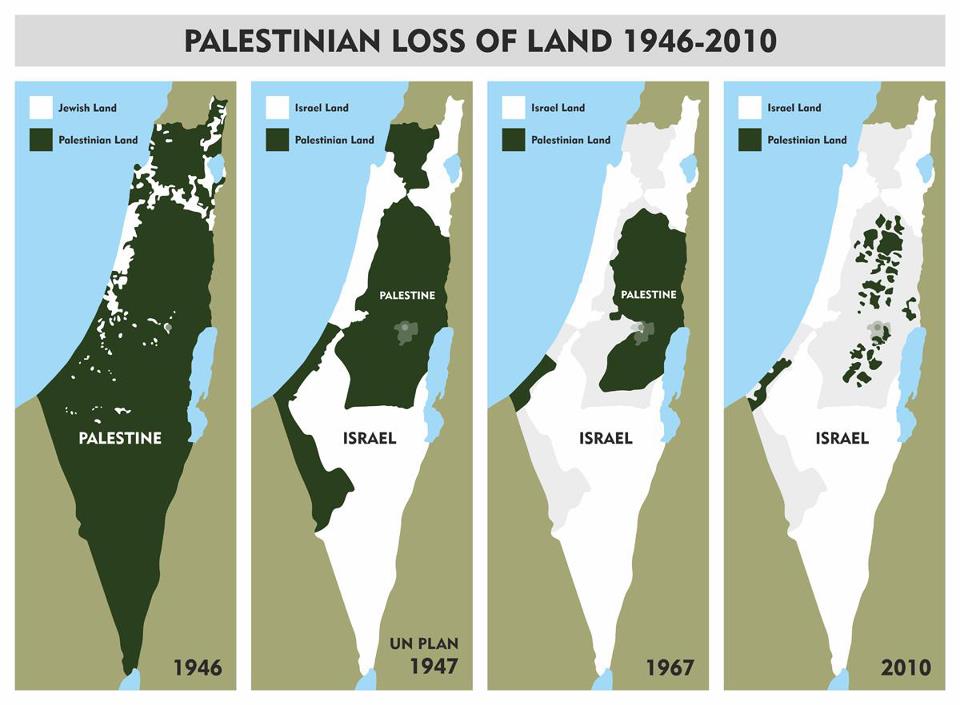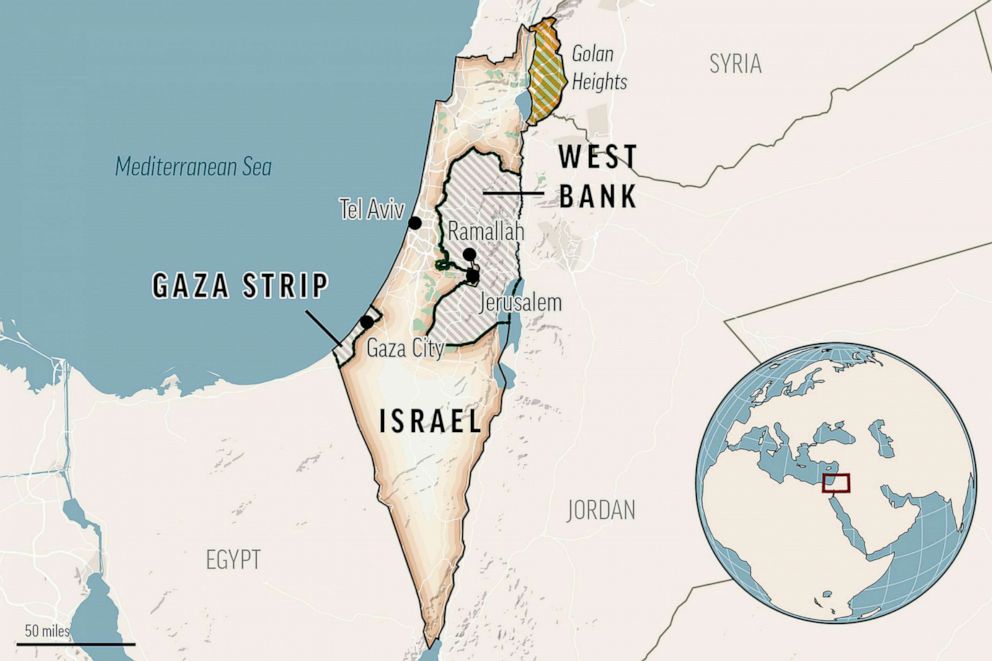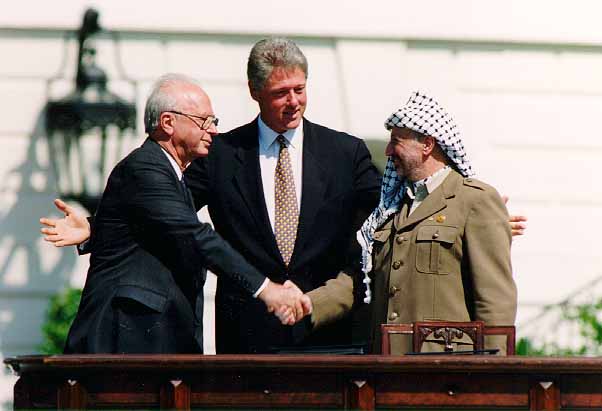
The long fight between Israel and Hamas has reached a boiling point, causing havoc across the warring region and catching global attention.

People participate in a show of solidarity with hostages being held in the Gaza Strip
(AP Photo/ Leo Correa)
Historical Background: The Creation of Israel

The origins of this conflict date back to the early 1900s. After World War I, Great Britain took over Palestine, where both Jews and Arabs lived.
Jewish people wanted to claim the land of Israel because, according to the Bible, God gave it to them. In Genesis 12:7, God promises Abraham the land for his descendants and expands on it in Genesis 15:18, specifying the territory that is now mostly Israel. Furthermore, Genesis 17:8 emphasizes the irrevocable nature of the land. This promise is passed down to Isaac and Jacob, whose name becomes Israel.
The Ottoman Empire assumed control over Palestine in the early 16th century. During World War I, the Ottoman Empire sided with the Central Powers, leading to its defeat. After the end of the Ottoman Empire, Great Britain would take over Palestine.
Tensions heightened even further in 1917 after the Balfour Declaration, which was a public pledge by Great Britain that declared its aim to establish “a national home for the Jewish people” in Palestine. To the dismay of many Palestinians, the world supported the Balfour Declaration. Accordingly, more Jews moved to the Israel-Palestine area, especially after the Holocaust, making issues between the Jews and Palestinians more intense.
Because neither the Jews nor Palestinians supported British rule, fighting between Jews and Palestinians and pushback against British rule worsened during the 1920s and 1940s.
In 1947, the United Nations was determined to split Palestine into Jewish and Arab parts, with Jerusalem acting as an international city. Jewish leaders agreed, but Arab leaders disagreed. The plan faded due to a lack of agreement.
The Creation of the State of Israel and the Root Causes of the Israel-Gaza Conflict
Israel declared itself a country in 1948. Before long, Arab countries, such as Lebanon, Syria, Iraq, and Egypt attacked. As a result, many Palestinians had to leave their homes. The attack and corresponding fleeing was known as Al Nakba or “The Catastrophe.”
In the aftermath of Al Nakba, many Palestinians wanted to move back to their homes, but Israel essentially said that returning would be problematic.
Israel had occupied most of the Palestinian land by 1949 as the fighting ceased; Jordan and Egypt took the rest of the unclaimed territory. Since there was no peace agreement between Israel and Palestine, warring ensued, and conflict in the region continued.
Consequently, many other issues remained. For example, Israel built houses in the West Bank and East Jerusalem, which proved to be controversial because these houses were against the law and made it hard to have two separate states.

A child runs in front of damaged buildings after airstrikes by Israel hit buildings in Gaza City in 2023.
(ALI JADALLAH/ANADOLU AGENCY/GETTY IMAGES)
The occupation of Jerusalem was another problem because Jews, Arabs, and even Christians viewed the land as holy. In fact, both Israelis and Palestinians claimed it as their capital.
Throughout this time, Israel worried about safety, thinking it needed to protect itself from future attacks. Additionally, in Gaza, a major city that is centrally located in Israel and is also adjacent to the Mediterranean Sea, there were not enough jobs or services, increasing feelings of unrest in the area.
The Occupation of Gaza and the Rise of Hamas

In 1967, Israel had begun attempting to occupy additional land in the area, including Gaza. Israel specifically wanted control of the Gaza Strip to protect itself from terrorism and rocket attacks; in addition, control over this land would help prevent the smuggling of weapons. The strip would provide a buffer zone for security from terrorist groups.
In 2005, Israel finally evacuated Gaza due to the ongoing fighting, leaving it to the Palestinians; however, Israel still controlled Gaza’s borders. This created an opening for Hamas, a terrorist group of about 60,000 members who were determined to end Israel’s power in Gaza in 2006. Hamas still seeks control of the area today.
International Perspectives and Efforts for Peace
The conflict has supporters and critics worldwide. The United States strongly supports Israel, giving them significant military and economic help. On the other hand, countries like Russia and China communicate with both sides without blaming Hamas.
World leaders have often tried to establish peace, but the situation is complicated and challenging to address.

U.S. President Bill Clinton stands between PLO leader Yasser Arafat and Israeli Prime Minister Yitzhak Rabin as they shake hands for the first time in 1993.
(Photo by J. DAVID AKE)

The Israeli prime minister (left), President George W. Bush (center), and the Palestinian Authority chairman (right).
(Jim Young for Reuters, November 27, 2023)
Many peace efforts, like the Oslo Peace Process in the 1990s and the 2003 Roadmap for Peace, faced challenges because of violence, political problems, and a lack of trust. The most recent peace plan, suggested by the United States during the Trump administration, was met with skepticism and rejection from the Palestinians.
The War Itself
This war has been devastating, leading to well over 1,400 Israelis killed and more than 240 taken hostage. On the Palestinian side, over 20,000 deaths have been reported, with a significant number being children, health workers, and journalists.
Gaza’s densely populated area faced airstrikes, causing around 1.5 million residents to flee their homes.
On November 24, a seven-day ceasefire allowed some evacuation from the war zone. However, the cease-fire came to an abrupt stop when as Israel puts it, Hamas “violated the operational pause” by firing a rocket towards Israel.
After the cease-fire ended, explosions erupted in Gaza. Efforts to extend the pause continue. Prime Minister Benjamin Netanyahu vowed to “crush” Hamas after the truce ended, and Secretary of State Antony Blinken urged plans to protect civilians.
The situation remains dire, with ongoing violence and an increasing death toll on civilians.
Impact on America
The United States has reasons for its involvement in the Israel-Palestine conflict, with one key aspect being its strong alliance with Israel, a democratic nation. This partnership also aligns with the U.S. support for democratic values in the Middle East. In addition, there is a significant Jewish-American population, and their concerns shape U.S. policy decisions.
President Biden’s official stance supports a two-state solution: “My administration is going to continue to engage Palestinians, Israelis, and other regional partners to work toward sustained calm.”
The U.S. plans to get more involved in this war, which could be for better or worse.

The pros of American engagement include having a role in finding peaceful solutions and maintaining influence in the Middle East. Moreover, if the U.S. chooses to disengage, there could be concerns about potential consequences on the region’s stability and its impact on American interests, like promoting democracy, oil, and even honoring our Jewish-American population.
However, the cons of American involvement clearly include the daily loss of American military lives. Another major drawback of American involvement is the significant financial toll. The Washington Post states that involvement in this war is expected to cost $50 billion. In fact, the current involvement already costs America $10 million every single day, according to usafacts.org.
This is notwithstanding the fact that America is currently spending billions due to its involvement in the Ukraine war – $75 billion to be more precise – according to CFR.org. Furthermore, it’s worth noting that the United States is currently $34 trillion in debt, per pgpf.org. For these reasons and more, many American taxpayers are opposed to engaging in this war.
The Never Ending Cycle
The creation of Israel, Palestinians losing their homes, Gaza’s occupation, and the rise of Hamas all play a significant role in the continuing war. Problems like Palestinian refugees, illegal Jewish settlements, struggles for control of Jerusalem, security problems, and harsh living conditions in Gaza keep the tensions high. Even though international views and peace attempts shape the talk, finding a real solution is still difficult.
If NATO intrudes in this war, it may start problems with China and Russia, which could potentially lead to World War III.

An Israeli armored personnel carrier near the Gaza Strip, October 2023
(Amir Cohen/Reuters)
Caption and Photo Credit for Featured Image:
Palestinians evacuate following an Israeli airstrike on the Sousi Mosque in Gaza on October 9, 2023. (Mahmud Hams)
Published By: andrewdunne2026
Back to Wolf Pack Press